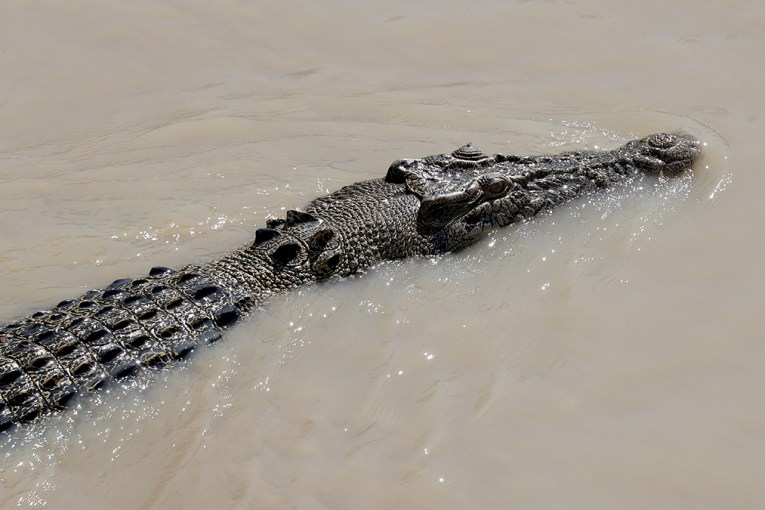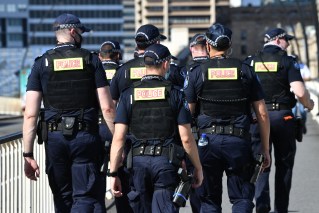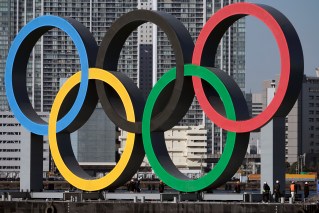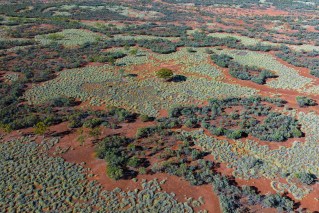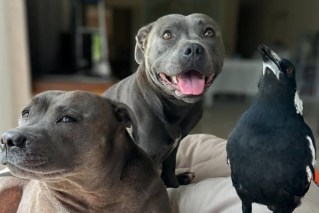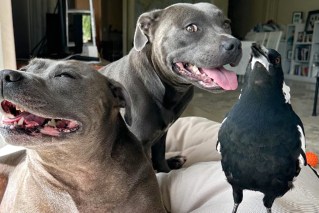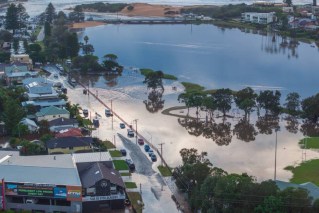Crocodile crackdown: Controversy over Queensland’s croc exclusion zones as experts warn on ‘false sense of security’
One of the country’s leading crocodile experts says a new plan to actively remove all of the reptiles from some areas of Queensland’s far north could lull people into a false sense of security.
The Queensland Government says it is simply trying to reduce the risk of an attack, but it has raised expectations that swimming spots in the far north can become as safe as those in the state’s south. Mark Solomons looks at the controversial and continuing battle between man and croc:
They elicit fear and fascination in equal measure. Sitting atop Australia’s animal food chain, a large adult can shred a man to pieces or swallow a small child or pet dog in a few gulps.
They are inherently repellent, but tourists and locals alike have always had a soft spot for the nation’s most famous predator.
But Queensland’s Government has had enough of crocodiles.
In the state’s far north, the conservative LNP administration is trialling a new zero-tolerance approach to the reptiles.
Laws enacted in July allow for some areas to be made crocodile “exclusion zones”, with scope to put in barriers to keep the animals from returning. Only one of these has been designated so far: a short section of the Ross River above Aplin’s Weir in Towsville.
But other zones considered to be at risk have been marked for more intensive patrols and the removal of any animal more than 2 metres long.
One of these covers the whole of the Cairns metropolitan area and its northern hinterland and beaches. Most of this zone has been further targeted for “proactive removal” of all crocodiles.
It all means a ramping up of the activities of the rangers working for Queensland’s Environment and Heritage Protection department.
They have removed a record 26 animals since the beginning of the year – risking their lives with each capture.
Anticipating a greatly increased workload, the Government is poised to announce the awarding of a private contract for the tracking and removal of the reptiles from the Cairns area on a 12-month trial basis.
Unlike the Northern Territory, Queensland doesn’t allow culling of wild-caught crocs. Instead the animals are taken to crocodile farms where they are used as breeding stock.
Their offspring will eventually become high-protein meat, handbags, belts and shoes.
Issue is competition for habitat, not a spike in attacks
The policy, still being rolled out in pilot form in Cairns, Townsville, Cassowary Coast and Hinchinbrook, has pitted the community against crocodile experts.
There is no evidence as yet of a spike in attacks by the reptiles in Queensland – the scheme is more about competition for land as the human population grows and managing the fear of attack.
Croc attacks have been slowly rising nationally in Australia as numbers have recovered following hunting bans.
But the last fatal croc attack in Queensland was in 2009 on the Daintree River, which was only the seventh death recorded since 1985.
There were two non-fatal incidents in Weipa in 2011.
Supporters of the policy say it is a case of better safe than sorry.
Beachgoers at Palm Cove near Cairns told the ABC of their fears after reports a pet dog had been taken by a crocodile in a nearby creek.
Surfers say they have spotted small crocodiles in the water and seen people paddle closer for a better look.
“It’s just gone too far in the one direction. We are entitled to use our beaches just like people down south. If they had crocodiles turn up on the Gold Coast or the Sunshine Coast there’d be a hue and cry on,” said Cols Sparkes, regional manager for Surf Lifesaving in North Queensland.
The rangers say the crocodile population is fairly constant. On their regular surveys of waterways around Cairns they expect to find one animal for every kilometre of creek.
But there is no doubt there are growing numbers of human inhabitants making increasing use of the waterways and beaches for fishing, boating, surfing and other leisure activities.
Government says it’s trying to ‘rebalance’ the interests of humans and crocodiles
The LNP State Government has made the revitalisation of local tourism, hit hard by the high dollar and a lack of investment, a policy priority.
In Cairns, the industry is anticipating a big boost from a proposed casino resort development at Yorkeys Knob. The site is right next to the zone being targeted by the rangers.
Environment Minister Andrew Powell says the new scheme rebalances the interests of humans and crocodiles.
“[There’s] no question that we want to conserve the crocodile and make sure we have a thriving population in Queensland, but there are some genuine public safety issues in North Queensland and we need to sort them out,” he said.
“In Cairns, for example, there are 160,000 people astride the Barron River. Barron River is prime crocodile breeding territory. When you have that interaction you’re going to have incidents and we want to reduce the risk of that occurring.”
However, one senior ranger told the ABC there was little evidence of crocodile nests along the Barron, with the implication that animals have moved south from the more densely croc-populated Daintree River or further north.
Scheme will create a false sense of safety, zoologist says
The longer-term impacts of the policy are being hotly debated.
University of Queensland zoologist Craig Franklin says the scheme is “misguided” and lacks scientific credibility.
He claims it will create a false sense of safety, especially in spots zoned as crocodile-removal areas.
“They will feel that it’s an exclusion zones, it’s a proactive removal zone, there’s no crocodiles around, it’s OK to wade into the water or go for a swim or put themselves at threat,” he said.
Professor Franklin, who like Mr Sparkes, sits on the panel advising the State Government on crocodiles, also worries that the removal of the animal that sits atop the local food chain could damage the ecosystem.
“This last trip up north one of my colleagues saw a crocodile eat one of these large golden catfish. They’re enormous. And it’s a snack for this crocodile,” he said.
“If there’s no crocodile, there could be in the future more golden catfish and they could be a predator for barramundi so there may be less barramundi.
“So there could be those kind of flow-on effects to affecting the fish that we so much prize.”
NT expert says crocs should be culled, not retired to farms
Grahame Webb, who is a wildlife academic, Northern Territory crocodile farmer and expert on the reptiles, goes further. He is calling the policy “pseudo-science and bullshit”.
He believes the new approach is just the latest in a series of “conservative, protectionist” approaches to the reptile by Queensland authorities and should not stop at relocating animals.
“Queensland has always had a bit of an identity crisis with animals that eat people,” he said.
“There’s no point trying to sugar-coat it, these things are serious predators. If you are attacked by a crocodile more than four metres long there’s about a 100 per cent chance of being killed.”
Professor Webb says Queensland should take a leaf out of the Territory’s book and not be so squeamish about culling problem crocs.
He notes that since restrictions on hunting were introduced in NT in 1971, the number of crocodiles has increased 20-fold and the total biomass gone up 100 times, as average size of individual animals has risen.
According to Professor Webb, the creeks and “stumpy little rivers” around Cairns are relatively poor habitat for the reptile in any case and unlikely ever to support significant numbers.
“I’d be very pragmatic,” he said.
“The Queensland Government has made a decision about killing them but it doesn’t make any sense.
“What does it matter? There’s plenty of crocs.”
